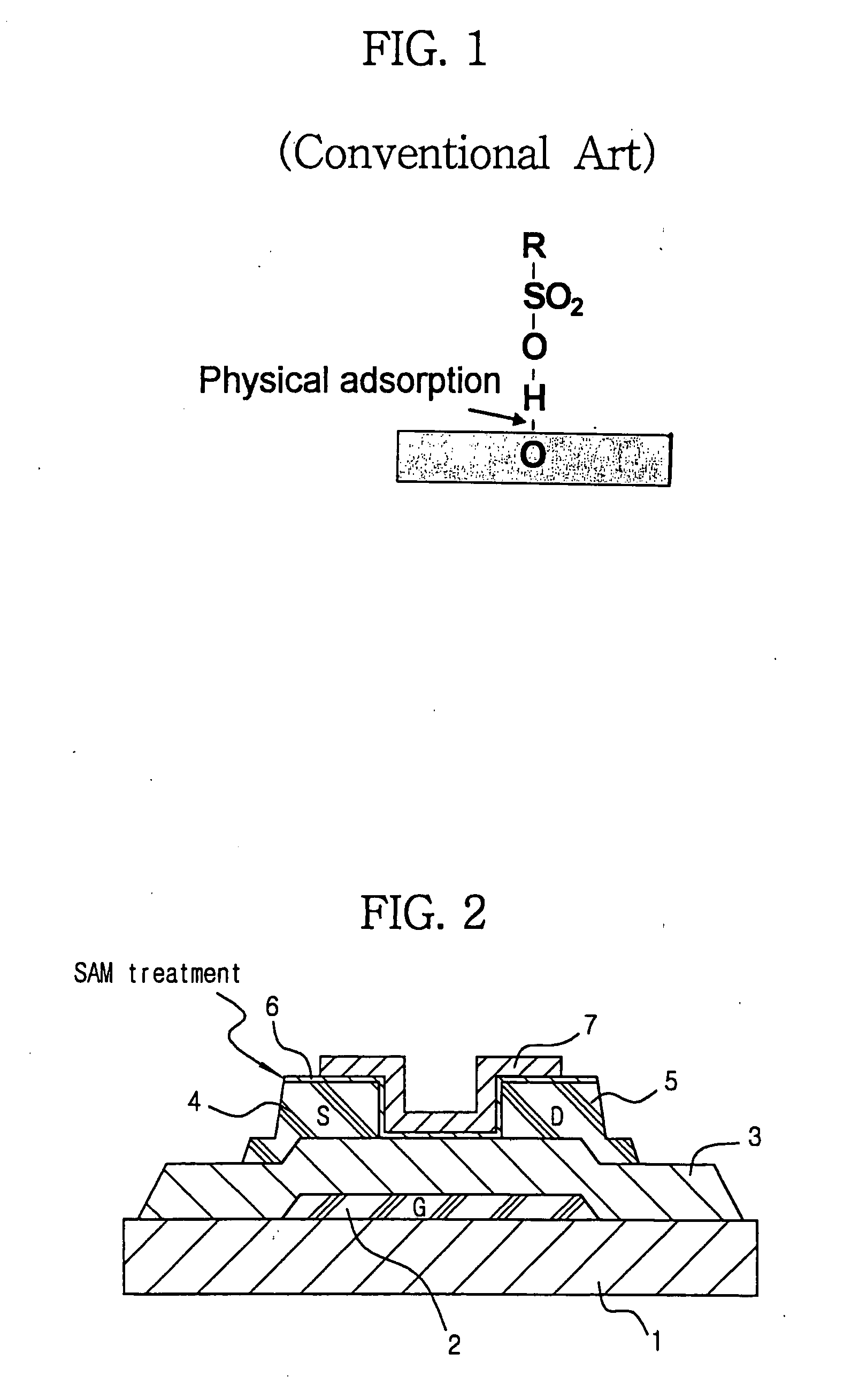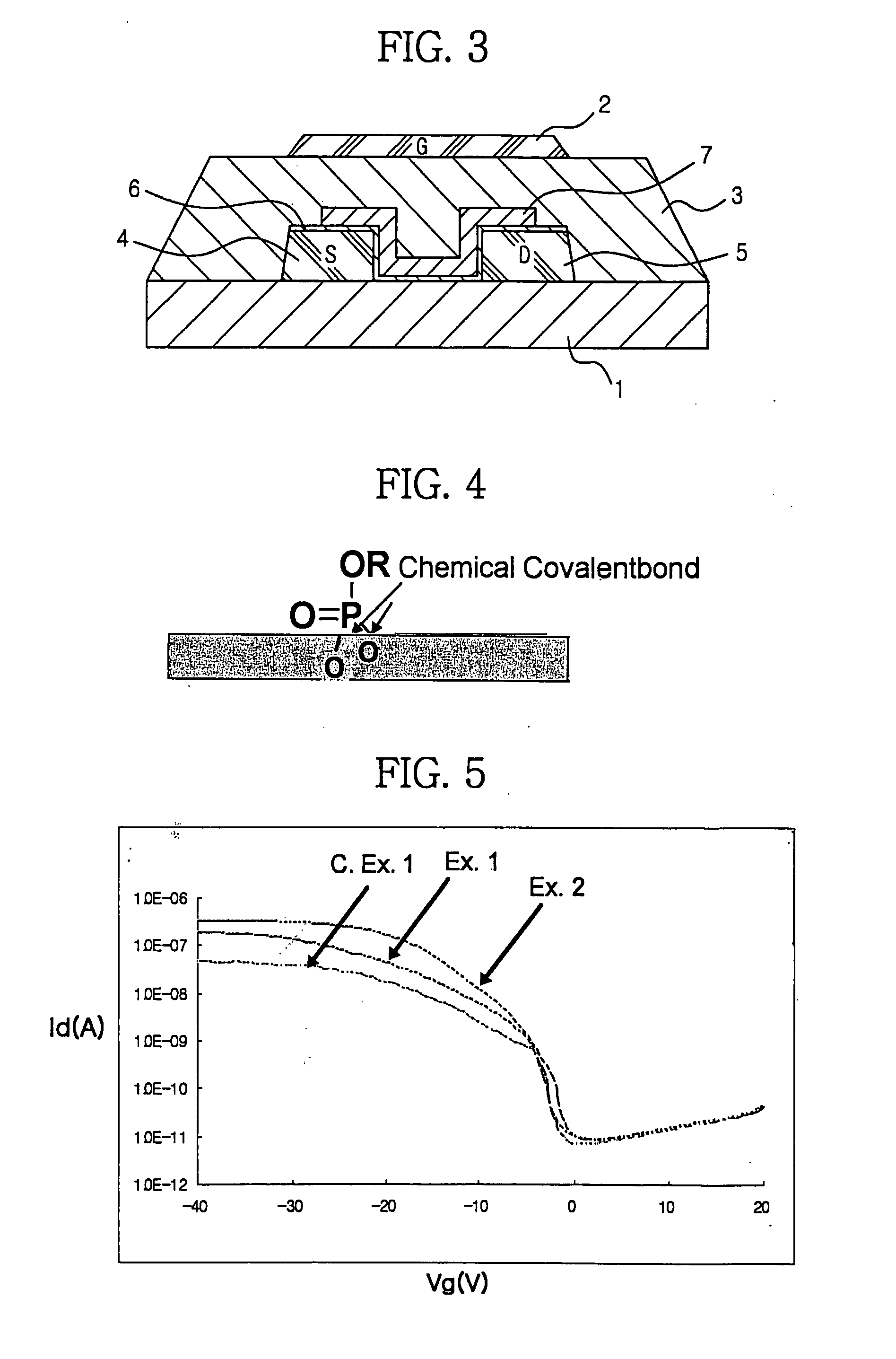Method of fabricating organic thin film transistor using self assembled monolayer-forming compound containing dichlorophosphoryl group
a thin film transistor and dichlorophosphoryl group technology, applied in the field of organic thin film transistors, can solve the problems of increasing on-current drop, reducing the contact resistance with the upper organic semiconductor, and unsatisfactory processibility, and achieve the effect of improving electrical properties
- Summary
- Abstract
- Description
- Claims
- Application Information
AI Technical Summary
Benefits of technology
Problems solved by technology
Method used
Image
Examples
example 1
[0061]On a washed glass substrate, a gate electrode was formed to a thickness of about 1500 Å through sputtering using Al / Nd. Subsequently, a PVP-based insulator was applied to a thickness of about 5000 Å on the gate electrode through spin coating at about 1000 rpm to thus form a gate insulating layer, which was then subjected to soft baking at about 100° C. for about 5 min, resulting in a desired gate insulating layer. ITO was deposited to a thickness of about 1000 Å thereon through thermal evaporation under a vacuum condition (about 2×10−7 torr, substrate temperature of about 50° C., and deposition rate of about 0.85 Å / sec), followed by performing photolithography to thus form an ITO electrode pattern. Thereafter, the ITO electrode was immersed in an SAM-forming solution, obtained by dissolving an SAM-forming compound represented by Formula 16 below in about 0.2 wt % ethyl alcohol, at room temperature for about 10 sec to thus realize surface treatment, and was then annealed for ab...
example 2
[0062]An OTFT was fabricated in the same manner as in Example 1, with the exception that a compound containing a dichlorophosphoryl group having fluorine, represented by Formula 17 below, was used as the SAM-forming compound:
PUM
| Property | Measurement | Unit |
|---|---|---|
| time | aaaaa | aaaaa |
| charge mobility | aaaaa | aaaaa |
| semiconductor properties | aaaaa | aaaaa |
Abstract
Description
Claims
Application Information
 Login to View More
Login to View More - R&D
- Intellectual Property
- Life Sciences
- Materials
- Tech Scout
- Unparalleled Data Quality
- Higher Quality Content
- 60% Fewer Hallucinations
Browse by: Latest US Patents, China's latest patents, Technical Efficacy Thesaurus, Application Domain, Technology Topic, Popular Technical Reports.
© 2025 PatSnap. All rights reserved.Legal|Privacy policy|Modern Slavery Act Transparency Statement|Sitemap|About US| Contact US: help@patsnap.com



